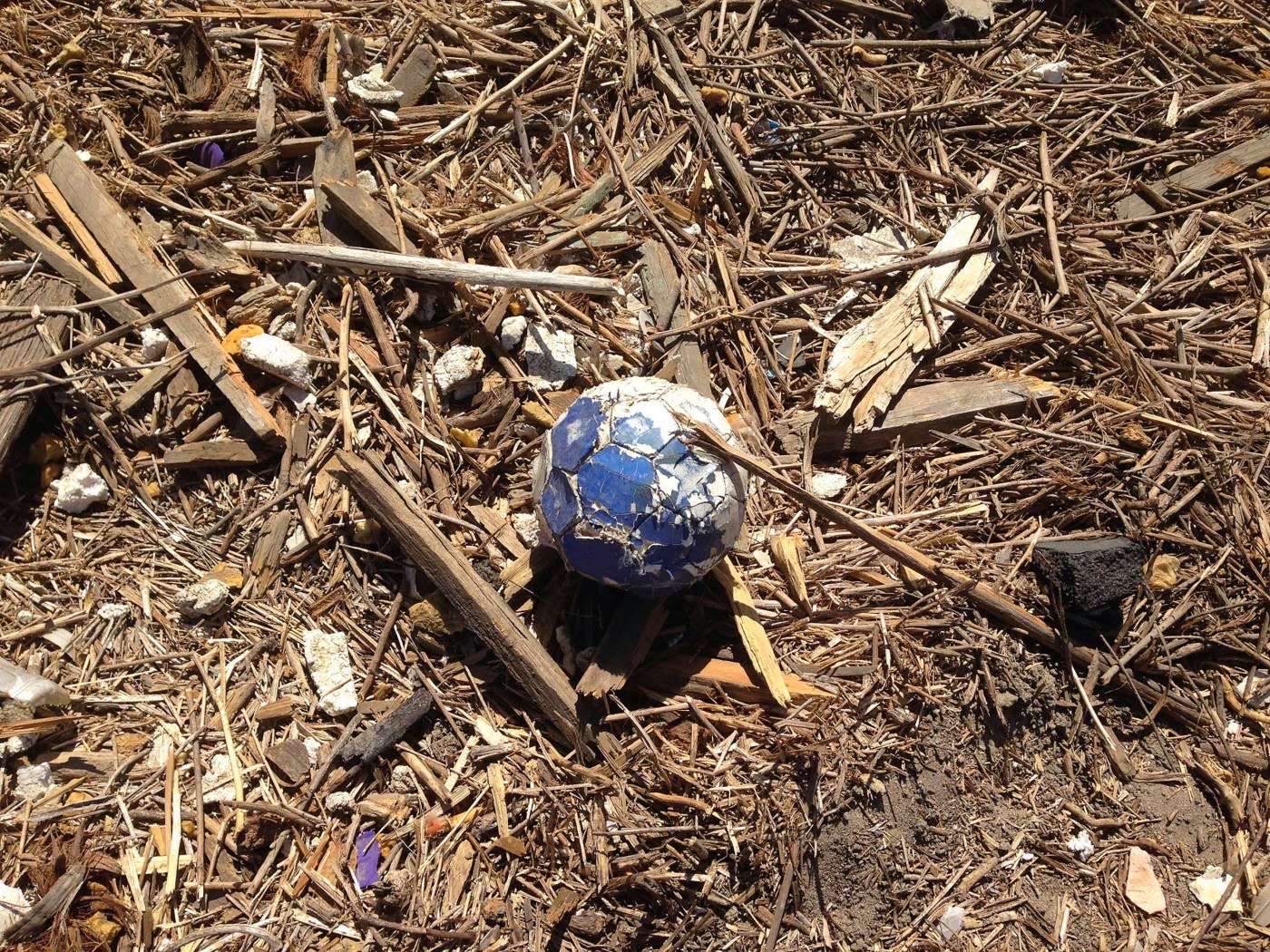Monday, December 15, 2014
Susan Harbage Page and Richard Misrach Photograph the Border
(Image by SHP)
Chapel Hill-based photographer Susan Harbage Page has been photographing along the border between the USA and Mexico since 2007, producing award-winning work that attends to signs of the transition in personal identity from one culture and nation to another by documenting the personal things left behind as people make that transition.
(Image by SHP)
Page photographs the objects where she finds them, then removes the objects from that setting and brings them to our attention by caring for them and exhibiting them as though they were objects of value in a museum collection rather than an item of ephemera cast aside as need dictated to the original owner.
(Image by SHP)
Page has exhibited this work widely over the past several years, in gallery and museum settings as well as in Installations in public spaces, contributing to our understanding of the experience of transition gone through by people whose emigration to the American South is transforming our culture.
(Image by SHP)
Page's work has been exhibited nationally and internationally, and has been recognized by awards and grants to support her continued efforts to bring attention to the scandal of America's immigration policy and to the people who give up their identities and assume new ones in their efforts to find a safe and secure place to do their work and live their lives with dignity.
(Image by RM)
Now, it turns out, the distinguished American photographer Richard Misrach (see image above) has recently produced a body of work in which he photographs along the border between the USA and Mexico, attending to signs of the transition in personal identity from one culture and nation to another by documenting the personal things left behind as people make that transition.
(Image by RM)
Misrach photographs the objects where he finds them, then removes the objects from that setting and brings them to our attention by caring for them and turning at least some of them over to a musician named Guillermo Galindo, who turns these items into musical instruments.
(Image by RM)
Misrach them photographs them again as objects that engage us as objects of value in a museum collection rather than an item of ephemera cast aside as need dictated to the original owner.
You can read more about Misrach's work here, from the California Sunday Magazine, and here, from a story from National Public Radio, where we learn that Misrach's work will be on display at the San Jose Museum of Art in the spring of 2016.
(Image by SHP)
The confluence of these two projects raises for us as photographers and artists a number of questions, it seems to me.
I've deliberately copied my language in this account of two artists' work to highlight the similarities between them in subject matter, concept, and execution, a similarity that extends to specific images, such as Page's image, above, of tires linked together and covered with dust and Misrach's image, below, of tires linked together and covered with dust.
(Image by RM)
Or, of Page's image of a fence separating the USA from Mexico, below, or Misrach's image of a fence separating the USA from Mexico, below Page's image.
Not to mention their photographs of combs abandoned at the border, see above.
(Image by SHP)
In my regular line of work, which is about studying the history and interpretation of literature and culture, we look for traces of artistic development, noticing signs of influence and response among writers and artists as careers in the arts unfold.
(Image by RM)
In my field, we recognize borrowing and indebtedness as well as the extent of transformation as one artist draws on the work of another artist in a variety of ways.
In my field, we also practice a discipline which recognizes that while there are an endless array of possible ways of approaching and interpreting the subject of our study, we always build on the work of others, and always acknowledge our sources, models, and other kinds of indebtedness to those who have preceded us in our common pursuit of understanding, enabling and inspiring our own endeavors.
I'm wondering to what extent issues like these are relevant to the relationship between living artists today working in a field in which originality is highly valued, but in which appropriation of another artist's work can in itself be regarded as an expression of creativity.
So, our question for the day -- what does Richard Misrach owe Susan Harbage Page?
Royalties, perhaps, for replicating her ideas, methods of working, and types and kinds of images? Or at least an acknowledgement of his indebtedness to her?
Does their common agenda make their work complimentary or does it make Misrach's work derivative?
Does Misrach's work constitute a case of plagiarism? Or does our understanding of artistic creativity privilege the individual vision so much that such considerations are irrelevant?
Does it matter that Misrach, with a much higher profile in the world of photo culture, gets national media attention for work that clearly replicates Page's work, in spite of Page's award-winning recognition for her work in North Carolina and the Southeast?
Questions to ponder -- I hope to provoke some conversation. Feel free to join in.
Page makes a self-portrait each year she works on the border, showing her against the Fence in silent protest of America's immigration policy.
Here is this year's photograph.
(Image by SHP)
Seems to me, this year, Page has even more to protest about than she's had in previous years. And this time, its personal.
Subscribe to:
Post Comments (Atom)
















No comments:
Post a Comment